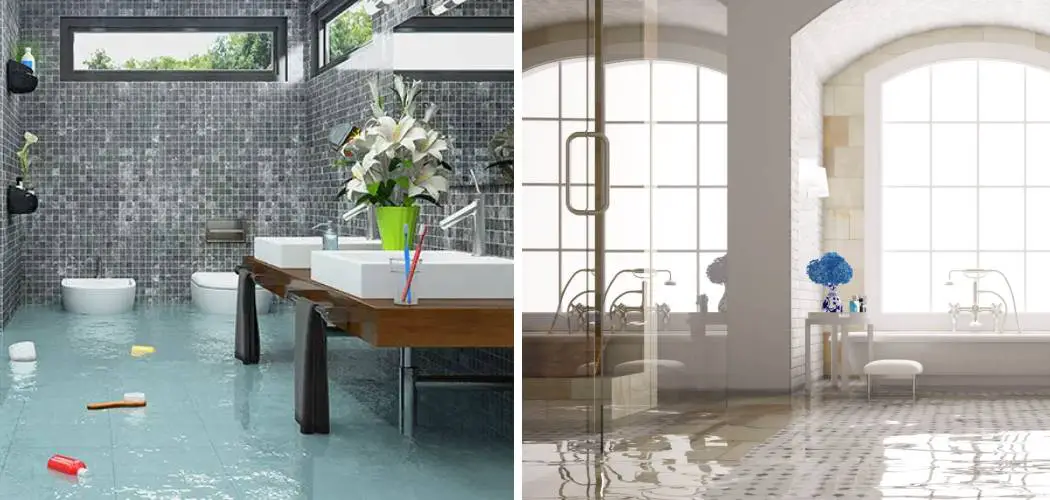If you’ve ever experienced the horrors of a flooded bathroom, you know that it can be a stressful and overwhelming experience—especially if you don’t have an immediate plan on how to address the issue. Dealing with floodwater in your bathroom is not only annoying but also hazardous–it may contain bacteria or human waste that has been washed away in the flooding. So what should you do?
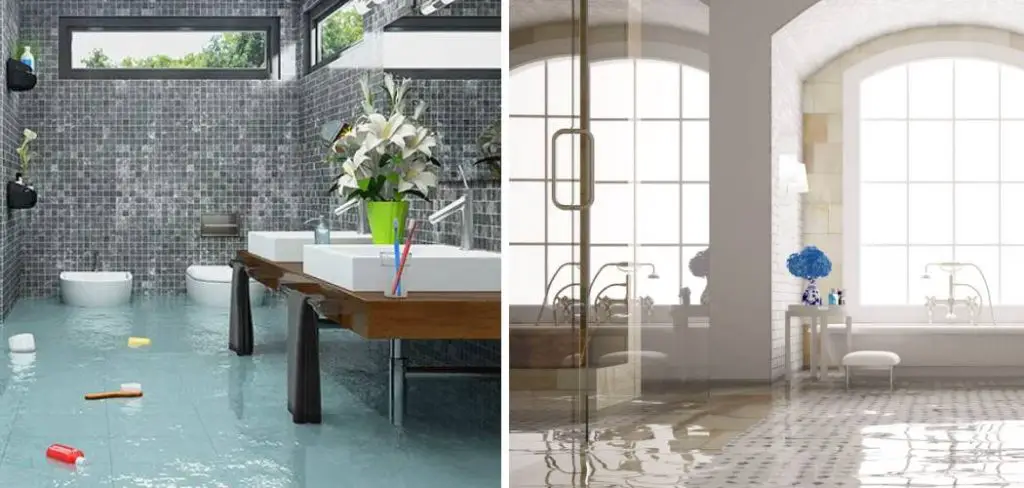
In this blog post, we will provide step-by-step instructions on how to clean up flooded bathroom and take actionable steps to prevent future damage from happening. Stay tuned for essential tips and tricks so you can make sure your bathroom is safe for everyone!
Tools and Materials You Need to Clean Up Flooded Bathroom
- Rubber gloves
- Face mask
- Buckets or containers
- Mop and squeegee
- Bleach or disinfectant cleaner
- Towels or rags for drying
- Wet/Dry Vacuum (optional)
Step-by-step Guidelines on How to Clean Up Flooded Bathroom
Step 1: Safety First
Before you jump into cleaning up the flooded bathroom, make sure to prioritize your safety. Always wear rubber gloves and a face mask to protect yourself from any harmful bacteria or chemicals that may be present in the floodwater. So make sure to grab these essential tools before you start the cleaning process.
Step 2: Remove Standing Water
The first step in any flood cleanup is to remove all standing water from the affected area. You can use buckets or containers to scoop out the water; alternatively, if you have a wet/dry vacuum, it will make your job easier and faster. Remember, the longer the water remains in your bathroom, the more damage it can cause.
Step 3: Clean and Disinfect
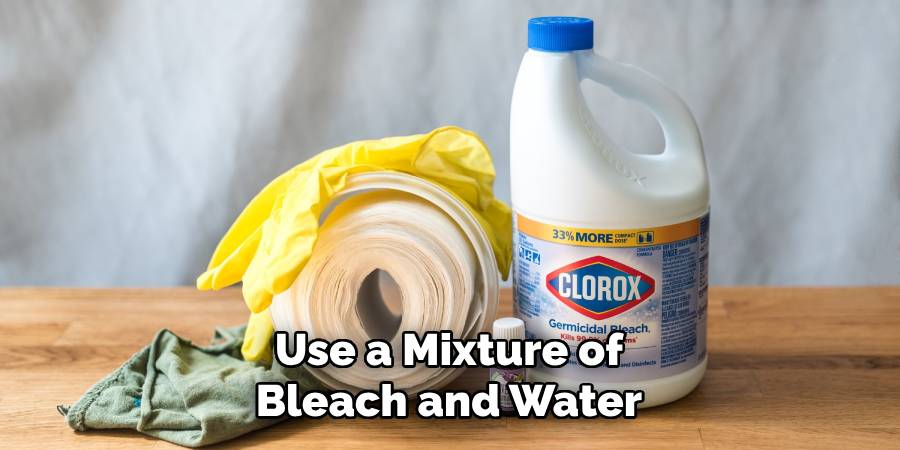
Once all the standing water is removed, it’s time to clean and disinfect. You can use a mixture of bleach and water or any disinfectant cleaner recommended for flood cleanup. Make sure to pay extra attention to areas around drains, toilets, and sinks as these are common breeding grounds for bacteria. While cleaning, wear your rubber gloves and take breaks if you feel light-headed from any harsh chemicals.
Step 4: Dry the Area
After disinfecting, use towels or rags to dry the entire bathroom. You can also use a mop and squeegee for larger areas. It’s essential to remove all excess moisture as it can lead to mold growth and cause further damage. If you have a dehumidifier, it’s also a good idea to use it in the bathroom for quicker drying.
Step 5: Ventilate
To prevent any lingering moisture and unpleasant odors, make sure to open windows or turn on fans to ventilate the area. This will help dry out the bathroom faster and keep it smelling fresh. You can also use air fresheners or natural odor absorbers like baking soda to eliminate any unwanted smells. Make sure to also wash all the towels and rags used in hot water to prevent any bacteria from spreading.
Following these steps will help you effectively clean up your flooded bathroom. However, in cases of severe flooding or damage, it’s best to seek professional help. Remember, prevention is always better than cure.
Additional Tips and Tricks to Clean Up Flooded Bathroom
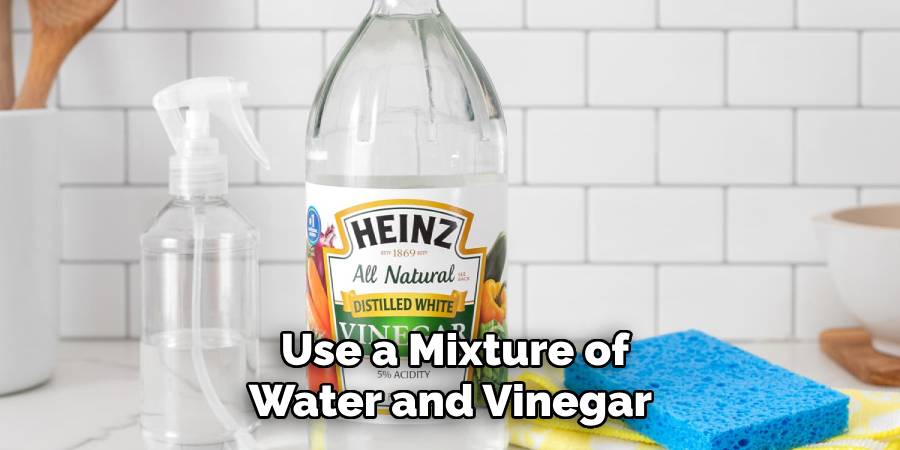
1. Use a squeegee or mop to remove excess water from the floors and walls of your flooded bathroom.
2. If you have electrical outlets in your bathroom, make sure to turn off the electricity before beginning any cleaning process.
3. For tiled floors, use a disinfectant cleaner to clean the grout. This will prevent mold growth and remove any unpleasant odors caused by standing water.
4. If you have carpet in your bathroom, it is important to remove it immediately and properly dispose of it as it can become a breeding ground for mold and bacteria.
5. Use a dehumidifier to remove excess moisture from the air. This will help prevent mold growth and make the drying process quicker.
6. Open windows and doors to allow fresh air to circulate in the bathroom.
7. Use a mixture of water and vinegar to clean any hard surfaces affected by the flood. Vinegar is a natural disinfectant and will help eliminate any bacteria or mold growth.
8. To remove any lingering odors, sprinkle baking soda on carpets or upholstery and let it sit for a few hours before vacuuming.
9. If the flood water was due to a sewage backup, it is important to call a professional cleaning service to properly sanitize and disinfect the area.
10. Keep an eye out for any signs of mold growth and address it immediately to prevent further damage.
11. Lastly, make sure to properly dry all the affected areas to prevent any future issues such as structural damage or mold growth.
Following these tips and tricks will not only help you clean up your flooded bathroom effectively but also prevent any potential health hazards or damage to your home. Remember to always prioritize safety when dealing with a flooded bathroom and seek professional help if needed. Stay safe and happy cleaning!

Things You Should Consider to Clean Up Flooded Bathroom
1. Before you start cleaning up the flooded bathroom, it is important to assess the damage caused by the flood. This will help you determine the best course of action and also give you an idea of how much work needs to be done.
2. Determine the source of the flood, whether it is from a leaking pipe, overflowing bathtub or toilet, or a natural disaster such as a hurricane or heavy rain. This will help you prevent further damage and take appropriate measures to fix the problem.
3. If the flood is caused by a burst pipe or plumbing issue, turn off the main water supply to your house immediately to prevent further flooding. If the flood is caused by a natural disaster, contact your local authorities for assistance and follow their instructions.
4. Once the source of the flood has been addressed, begin removing any standing water in the bathroom using a wet/dry vacuum or buckets and mops. Be sure to wear protective gear such as rubber gloves and boots while performing this task.
5. After all the standing water has been removed, use a disinfectant or bleach solution to clean and sanitize the affected areas, including walls, floors, and any items that may have come into contact with the floodwater.
6. If there is significant damage to your bathroom fixtures or flooring, it may be necessary to call a professional for repairs or replacement. Make sure to take photos and document the damage for insurance purposes.
7. It is important to thoroughly dry out the bathroom to prevent mold growth. Use fans, dehumidifiers, and open windows to promote air circulation and speed up the drying process.
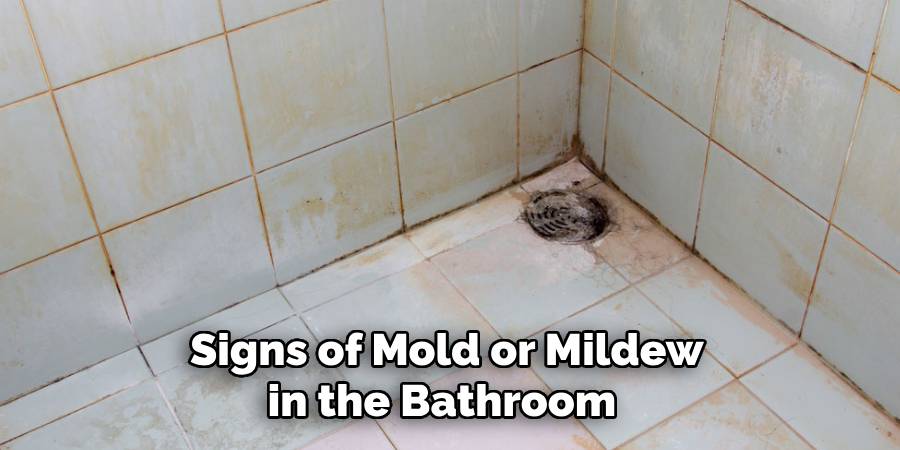
8. Check for any signs of mold or mildew in the bathroom. If you notice any, use a mixture of water and vinegar or a commercial mold remover to clean and disinfect the affected areas.
9. Lastly, after the bathroom is completely dry and free of any mold or mildew, it is a good idea to do a thorough deep cleaning to ensure that all surfaces are clean and sanitary.
Following these considerations will help you effectively clean up a flooded bathroom and prevent further damage or health hazards. Remember to always prioritize safety and seek professional assistance if needed. Stay safe and take care of your home!
Frequently Asked Questions
What Should I Do if My Bathroom Gets Flooded?
If your bathroom has been flooded, the first thing you should do is turn off any sources of water to prevent further damage. This includes turning off the main water valve and unplugging any appliances that may have been affected by the flooding. It is also important to assess the severity of the flooding and determine if you need professional help.
How Do I Clean Up After a Flood?
The first step in cleaning up after a flood is to remove any standing water. This can be done with towels, a mop, or a wet/dry vacuum. Next, it is important to thoroughly dry out the affected area to prevent mold growth. This can be done with fans, dehumidifiers, and open windows if weather permits. Once the area is dry, any damaged items should be disposed of and the remaining surfaces should be thoroughly cleaned and disinfected.
Can I Salvage Any Items After a Flood?
It depends on the severity of the flooding and how long the items were exposed to water. In general, porous materials such as fabric or wood should be discarded if they have been submerged in water for more than 48 hours. Non-porous materials like metal or plastic can often be salvaged after proper cleaning and disinfecting.
How Can I Prevent a Flood in My Bathroom?
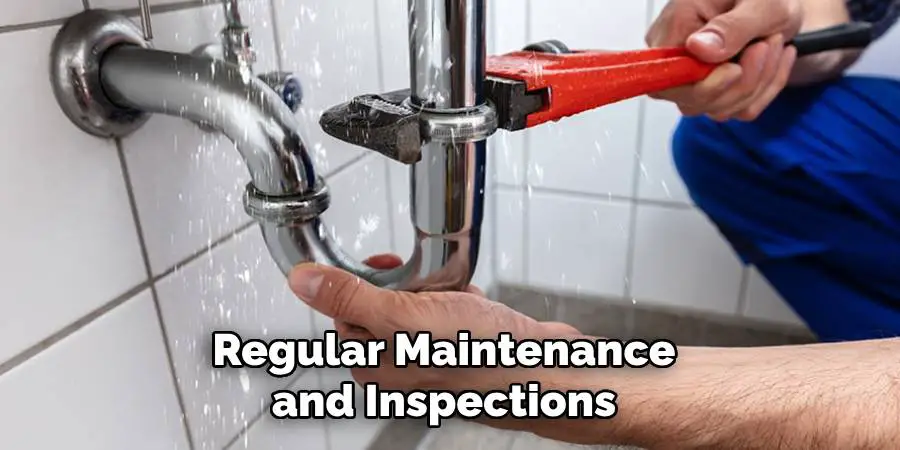
Regular maintenance and inspections can help prevent a flood in your bathroom. Make sure to check for any leaks or damage in your pipes and fixtures, and repair them promptly. It is also a good idea to keep an eye on the water pressure in your bathroom, as high pressure can lead to burst pipes. Installing flood sensors and turning off the main water valve when you are away from home can also help prevent major flooding.
Is Flood Damage Covered by Home Insurance?
It depends on your specific insurance policy. Some policies may cover flood damage while others may require additional coverage. It is important to review your policy and speak with your insurance provider about the extent of coverage for flood damage.
Conclusion
Now you have clear knowledge of how to clean up flooded bathroom. Remember to always prioritize safety and turn off any sources of water before beginning the clean-up process.
Regular maintenance and inspections can also help prevent future floods in your bathroom. If the damage is severe, it may be best to seek professional help for proper restoration and repairs. And don’t forget to review your insurance policy for coverage of flood damage. Stay safe and prepared for any unexpected bathroom floods.
So, always be aware of the changes in your bathroom and take proper steps to avoid any potential disasters. With these tips in mind, you can effectively clean up after a flooded bathroom and prevent future incidents. Happy cleaning!

